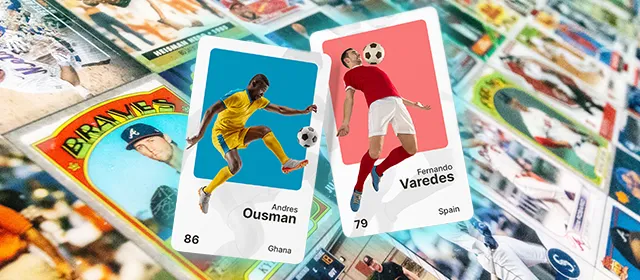The modern sports trading-card market has seen a pronounced resurgence since the COVID-19 pandemic, driven by renewed collector interest, online marketplaces, and novel product formats. Academic research and recent field studies document this revival: one survey-based study of nearly 200 collectors reports that 78.16% of respondents focus their collections on favourite players or teams, illustrating the strong fandom-driven demand that underpins the market (Source: https://www.researchgate.net/)
That same study also notes structural shifts in distribution and resale: online auctions and secondary trading platforms expanded secondary-market activity by roughly 40% over the five years prior to the paper, underlining how digital channels amplified buying, selling, and price discovery.
Scholarly work on collector motivations confirms these findings: research into collecting behaviour highlights nostalgia, identity, and social engagement as primary drivers that translate into consistent purchasing of trading cards — a pattern that helps explain sustained demand even as product formats (physical, digital, limited-editions) diversify.
At the same time, academic investigations into technology’s role show the market is evolving: studies examining Web3, blockchain, and digital collectibles point to rapid innovation in authentication and fractional ownership models — forces likely to shape both incumbents and new entrants through 2026. According to Kings Research, the global Sports Trading Cards Market is expected to hit $20.48 billion by 2030.
What Are the Factors Propelling Sports Trading Cards Adoption?
The sports trading cards industry is experiencing a surge in demand driven by advancements in technology and a growing interest in both vintage and contemporary cards. Investing in sports cards has proven lucrative for traders, and the industry is witnessing an increase in large prize pool events that present growth opportunities. These factors are expected to propel the sports trading cards market's growth during the forecast period.
In 2021, a signed rookie card of basketball superstar LeBron James sold for a record-breaking USD 5.2 million at auction. This sale underscores the growing popularity of sports trading cards, particularly those of high-profile athletes. As more collectors, investors, and traders seek to capitalize on the opportunities in the sports trading cards market, this upward trend is likely to continue.
Additionally, an unopened case of ice hockey cards discovered in a basement office has fetched a Canadian family USD 3.1 million (CAD 4.2 million; £2.4 million) at auction. The case potentially contains over 20 "rookie cards" of Wayne Gretzky, one of the greatest players in the history of the sport.
Top 10 Sports Trading Cards Companies in 2025
The top 10 sports trading cards companies include Panini, Topps, Bowman, Upper Deck, Fleer, Donruss, O-Pee-Chee, Leaf, Score, and Futera. All of these are classified based on innovation and technological advancements. Each company has demonstrated a commitment to innovation, whether through the introduction of new card technologies, unique designs, or digital advancements like NFTs.
1. Panini
Few trading card companies have had as significant an impact on the modern hobby as Panini. Founded in 1961, Panini initially made its mark with FIFA World Cup stickers, beginning its partnership with FIFA in 1970. Panini America, a well-known subsidiary, started producing NBA-licensed cards in 2009 after acquiring Donruss.
In January 2025, Panini introduced the first-ever Barclays Women’s Super League Adrenalyn XL trading card collection, marking a major milestone in women’s football merchandising. The launch expands Panini’s renowned sports-card franchise to celebrate top female players and clubs, aiming to enhance visibility and fan engagement within the rapidly growing women’s football community (Source: https://herfootballhub.com/).
2. Topps
To increase sales of its Bazooka chewing gum, Topps started making trading cards in 1950. The first set of cards featured the Western figure, Hopalong Cassidy. Among their initial set of baseball cards, which were out in 1952, was the legendary rookie card of Mickey Mantle, which went for $12.6 million in 2022.
In October 2025, Topps unveiled its new Basketball Living Set, introducing a unique weekly release format where one NBA player card from the 2025–26 season is made available for a limited time. The initiative aims to blend artistic card design with collectible appeal, offering fans a continuous, evolving series of exclusive basketball cards. (Source: https://www.sportscollectorsdaily.com/)
3. Bowman
Bowman rose to prominence in the 1940s, predating Topps. The 1951 Bowman Mickey Mantle is considered Mantle’s true rookie card, with a PSA 9 selling for $1.4 million. After legal battles and a 1956 acquisition by Topps, the Bowman brand was revived in 1989, introducing larger cards featuring rookie phenom Ken Griffey Jr. Today, Bowman remains a staple in the hobby, with Bowman Chrome rookies being among the first cards of young, emerging players.
4. Upper Deck
Founded in 1988, Upper Deck revolutionized the trading card industry with foil wrappers and holograms to prevent counterfeiting. Their 1989 set, featuring the iconic Ken Griffey Jr. rookie card, is highly regarded. Upper Deck was the first company to introduce game-used jersey swatches in 1997, and their 2003–2004 Exquisite Collection set a new standard for premium cards. Currently, Upper Deck holds exclusive rights to produce NHL cards and has exclusive memorabilia contracts with top athletes. Recently, Upper Deck introduced blockchain-verified digital cards to provide enhanced security and authenticity for collectors.
5. Fleer
Founded in 1885, Fleer is one of the sports trading cards online and a pioneer in the trading card industry, known for integrating gum into card packs. They produced some of the hobby’s most valuable rookie cards, including those of Michael Jordan and Wilt Chamberlain. The 1997 Skybox Metal Universe series, featuring Precious Metal Gems inserts, remains highly sought-after. Upper Deck acquired Fleer in 2005, continuing its influence on the hobby. In recent years, Upper Deck has used the Fleer brand for select reissues and special editions, maintaining its legacy in the market.
6. Donruss
Established in 1954, Donruss became a significant player in the trading card industry with iconic products like the "Rated Rookie" emblem. Acquired by Panini in 2009, the Donruss brand continues to be used for football, basketball, baseball, and soccer cards. Panini's introduction of Donruss Optic in 2016, which combines classic Donruss designs with modern opti-chrome technology, has been well received by collectors. Donruss recently introduced a new authentication feature using holographic technology to enhance card security.
7. O-Pee-Chee
Known for its ice hockey cards, O-Pee-Chee began producing trading cards in the 1930s and partnered with Topps to release flagship designs in Canada. The 1979 Wayne Gretzky rookie card is the most precious O-Pee-Chee card, with a PSA 10 selling for USD 3.75 million. Though the company no longer exists independently, Upper Deck uses the O-Pee-Chee brand for many of its hockey products. Upper Deck recently enhanced the O-Pee-Chee series with digital authentication features to ensure the integrity of their hockey cards.
8. Leaf
Founded in 2010 by Brian Gray, Leaf Trading Cards focuses on autograph-centric products across sports and non-sport categories. Despite lacking major league licenses, Leaf offers affordable options for collectors seeking autographs of their favorite players. Recently, Leaf introduced a blockchain-based verification system to enhance the authenticity and security of their autograph cards.
9. Score
Score emerged during the late 1980s, gaining recognition for its vibrant card designs and detailed player biographies. Originally part of Pinnacle Brands, Score was later acquired by Donruss Playoff. Today, the Score brand appears on various lower-end football and basketball products. Score recently implemented a new QR code system on their cards, allowing collectors to verify authenticity and access additional player information online.
10. Futera
Founded in 1989, Futera focuses on soccer cards and has a presence in Europe, Asia, and the U.S. Known for its high-quality cards, Futera also ventured into the NFT market with its Futera United set, allowing collectors to purchase physical copies of their digital avatars. Recently, Futera enhanced its authentication process by integrating NFC technology into its physical cards, enabling instant verification and adding security for collectors.
Conclusion
By 2026, the sports trading-card landscape will be defined by companies that successfully combine traditional strengths (strong league/IP partnerships, access to limited physical runs, and autograph/memorabilia inserts) with digital capabilities (authenticated provenance, online marketplaces, and Web3 integrations). The evidence from academic studies — showing strong fandom concentration (≈78% preference for favourite players/teams) and substantial growth in secondary trading (≈40% expansion) — suggests firms that enable discoverability, secure provenance, and community engagement will lead the market.




